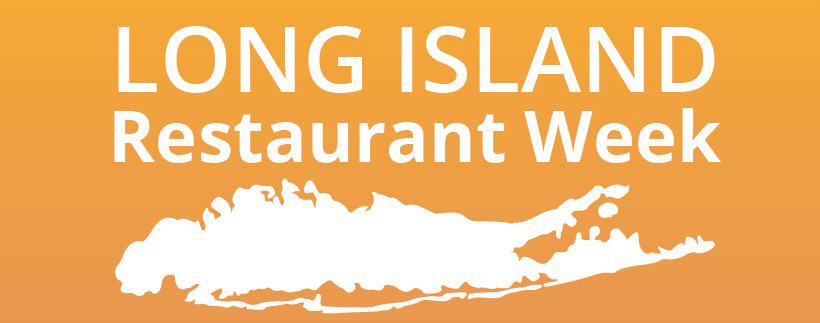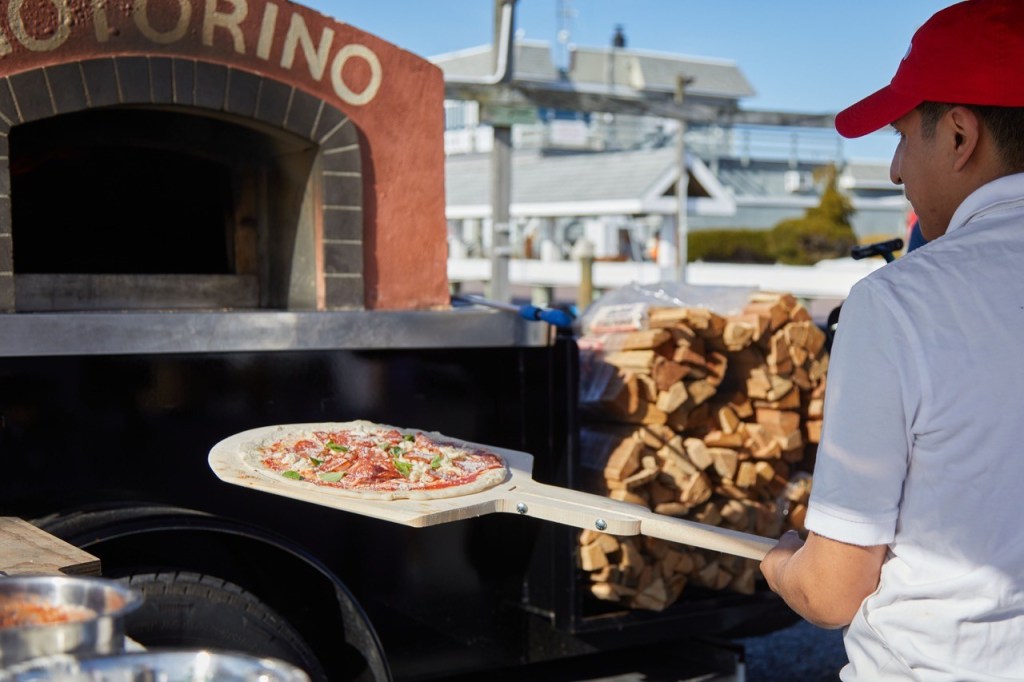Pandemic Pals: Pet Adoption Boom on the East End
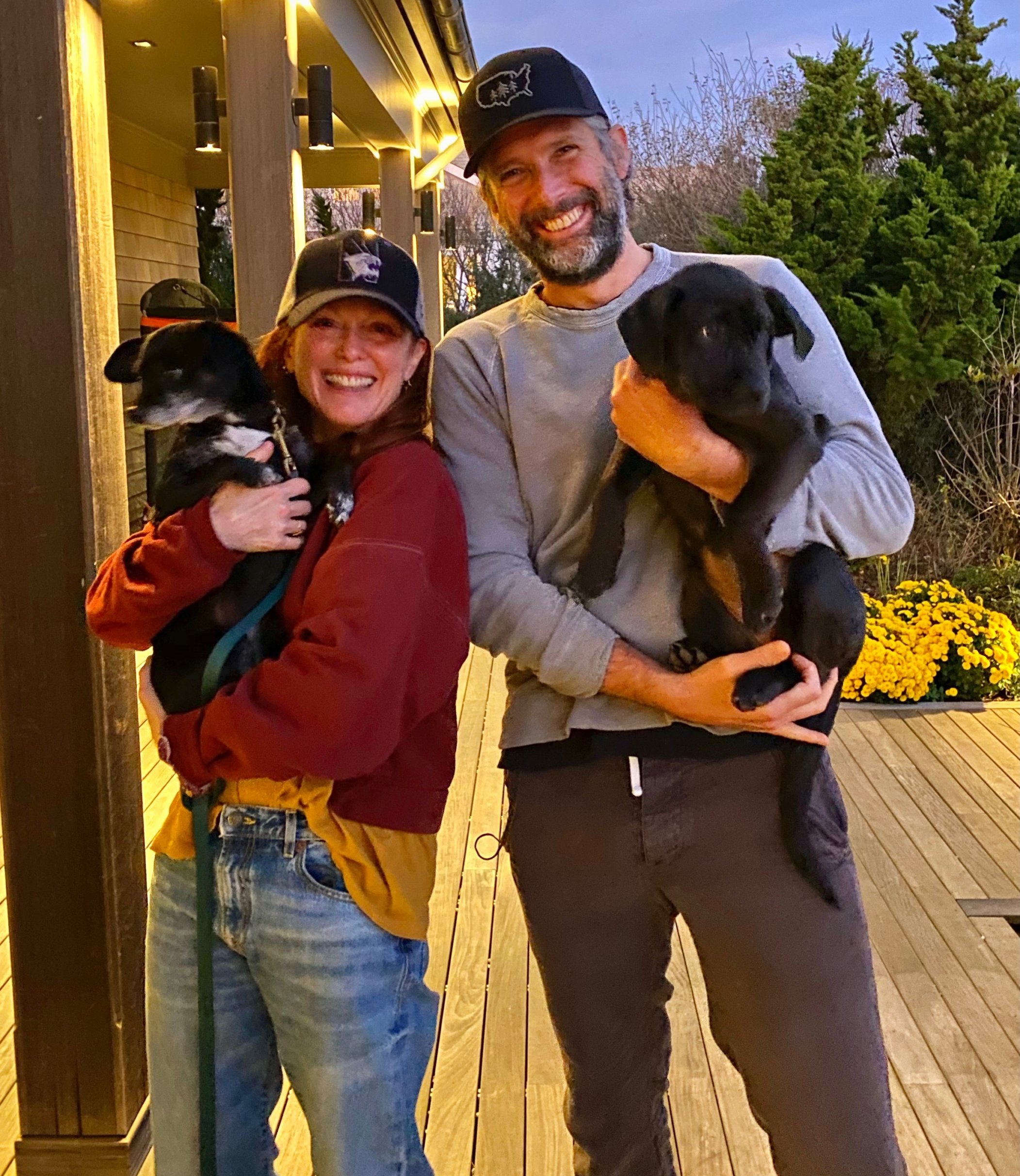
If you love animals, you know the joy and companionship a pet can bring. Enter COVID-19, and it’s no wonder the demand for adoptions and fosters has skyrocketed.
“We do about 200 dog adoptions a year. Last year we did almost 400, so in 2020 we doubled our number of adoptions,” says Michelle Montak, founder and director of Gimme Shelter Animal Rescue, a nonprofit, foster-based dog rescue foundation operating out of Sagaponack. “During COVID, I think people realized the value and compassion of having the love of an animal. It was a big draw in 2020, people were looking for something to comfort them, and dogs offer unconditional love.”
According to Montak, Gimme Shelter has saved 3,000 dogs in the last 10 years. It does not have a physical facility or shelter. Most of the rescues come from the South, and the mission is to rescue animals destined for euthanasia in high kill facilities, to address them medically and then to transport them to their foster network on the East End, before being adopted.
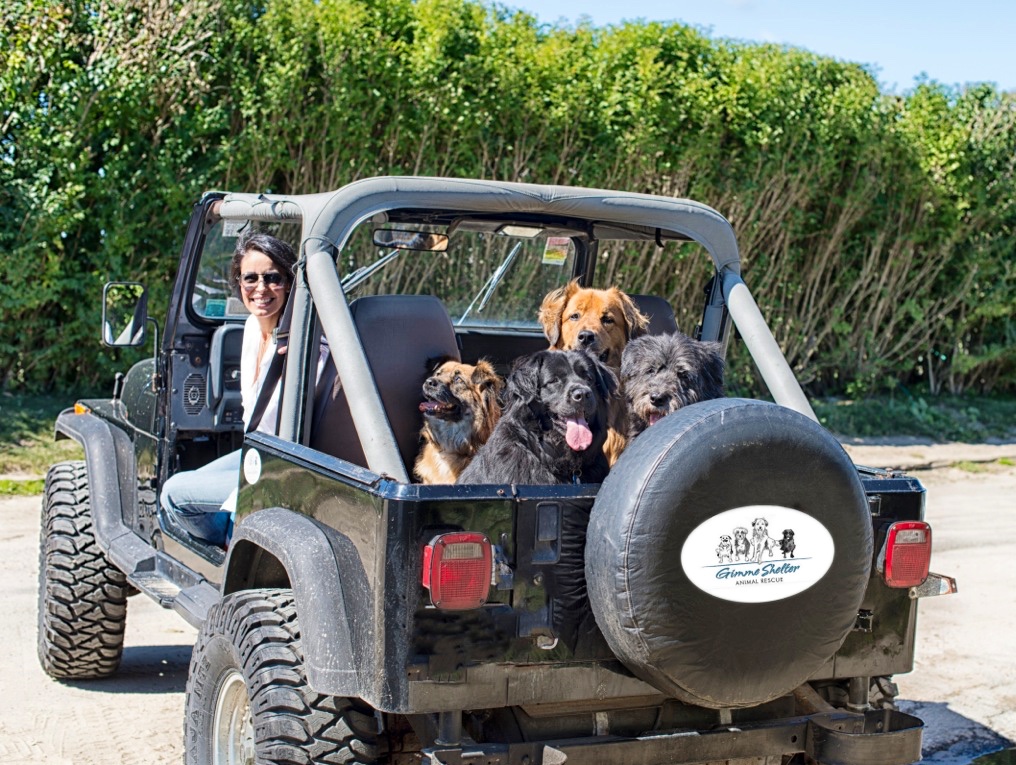
One of those rescue dogs in 2020 found its forever home with actress and Montauk resident Julianne Moore, and her husband Bart Freundlich.
“We were so ready to adopt another dog and really wanted a rescue (our lab mix Cherry passed away two years ago),” says Moore. “Gimme Shelter is very thorough in their vetting process and careful about placing their dogs. When we heard there was a lab mix puppy named Cherry being fostered about 15 minutes from where we live (in Montauk), of course we felt like it was a sign! When we went to meet her, it was about an hour after Biden was declared the winner of the election. It was a very happy day moment when we met our gorgeous new puppy—and we renamed her Hope.”
Animal shelters on the East End have been working hard this year to keep up with the (continued) demand, while pivoting and adjusting to new and stringent regulations, and the realities of operating as an essential service during a pandemic.
“For each new animal posted for adoption (in the past year) we were flooded with applications,” says Jamie Berger, director of marketing and communications at the Animal Rescue Fund of the Hamptons (ARF). “There was way more demand for animals than we had. So we did not see an increase in adoptions because of supply. Our rescue transports were an issue, with crossing state lines and the quarantining. But the silver lining in this is that because our inventory was low about 10 of our long-term residents got adopted or fostered—many of which were overlooked for longer than we had hoped.”
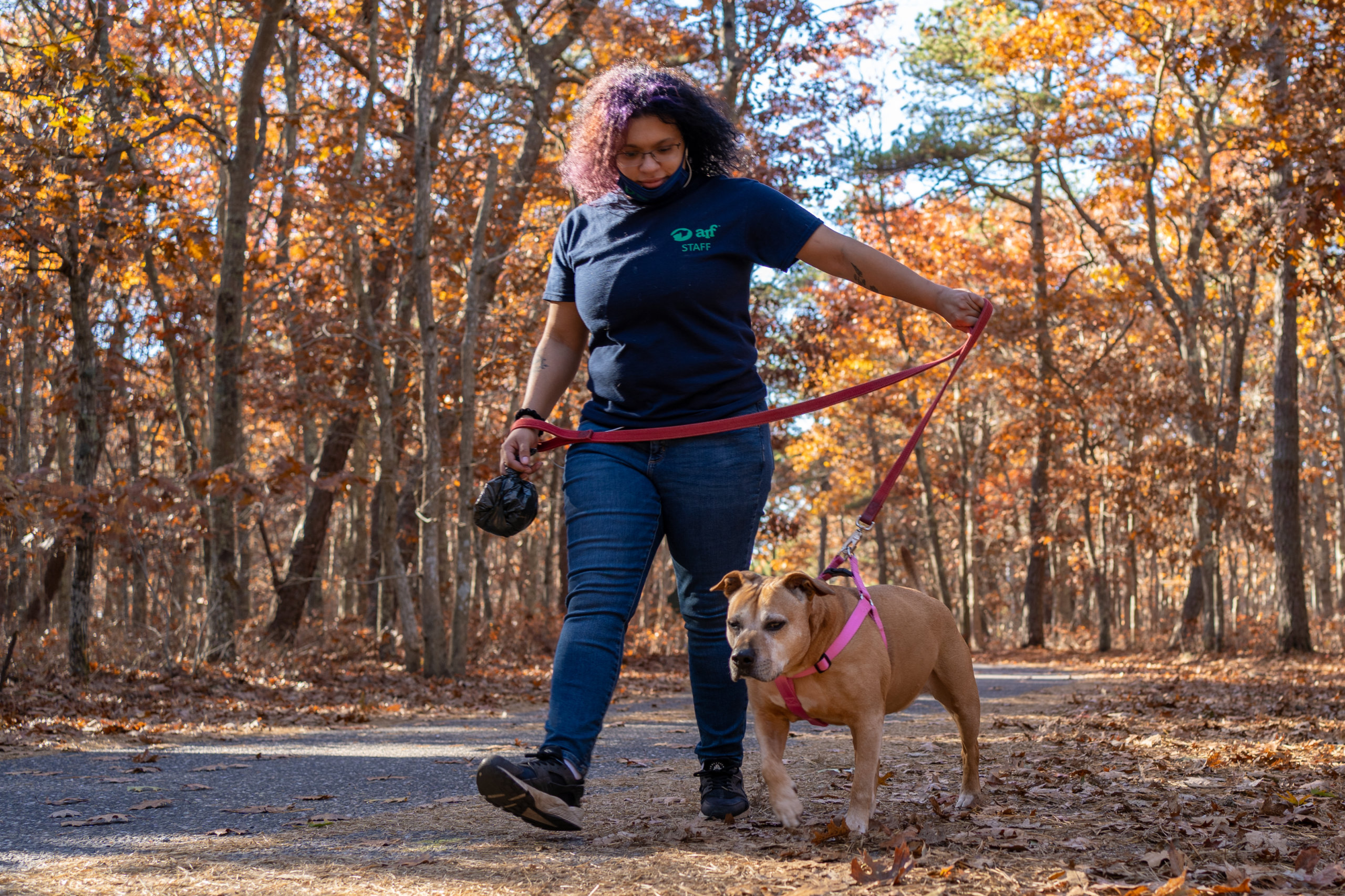
At Bideawee’s Westhampton location, where there is a shelter, an animal hospital and a pet memorial park, “demand for adoptable animals rose exponentially during the pandemic,” says Leslie Granger, CAWA and Bideawee President/CEO. “The demand to adopt is still so high—I haven’t seen it drop yet.”
According to Granger, since March of last year, Bideawee did 317 adoptions in Westhampton, and between 1,600 and 1,700 over all three locations in Manhattan, Wantagh and Westhampton.
“Our ability to keep up with demand was hampered by safety protocols to keep all staff, volunteers and adopters safe—plus transport inconsistency, less animals being surrendered, adoptions by appointment all led to fewer adoptions,” adds Granger. “But we are now seeing that start to increase and expect it to continue back up to pre-pandemic levels, hopefully by the fall.”
What are the chances now of adopting a dog or cat from a shelter or rescue out East? Better than last year at this time.
“People are still trying to adopt–which is fabulous–we can’t seem to keep up with the demand,” says Berger. “Right now our inventory is on the lower side, 50-75 animals in the building, not all available for adoption just yet.”
Check out our Hamptons Need-to-Know: Pet Adoption and Fostering Guide
But spring is here, and with it, the impending kitten explosion.
“As far as ferals go on the East End, ARF’s Operation Cat Program is up and running,” says Berger. “We were shut down for a bit at the height of the pandemic but we are now back on a limited capacity…. We do need foster volunteers out in the community to help spot feral kittens in colonies, and if they get spayed and neutered early, that’s how they get adopted.”
“Foster has been our saving grace,” says Granger. “More than 700 people applied to be foster families at Bideawee in the first week of the pandemic.”
Gimme Shelter saw “about double the amount of fosters this year,” adds Montak.
In Hampton Bays at Southampton Animal Shelter Foundation (SASF), which serves animals in need including, dogs, cats, rabbits, birds, guinea pigs and “lots of roosters and chickens who stray,” there are about 48 dogs for adoption—everything from 9-monthold black lab puppies to senior dogs, notes Kate McEntee, director of pet adoptions.
“The number of cats is “in the 80s—that goes up to about 100 in kitten season, as we are about to get slammed with kittens.”
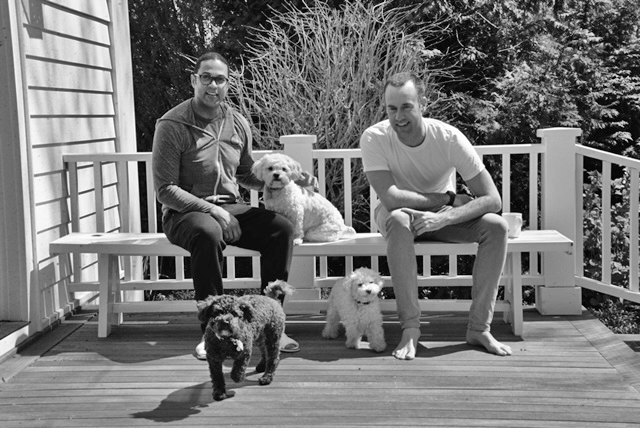
CNN anchor Don Lemon and his fiancé Tim Malone adopted their three rescue dogs from SASF.
“We love them so much,” says Lemon. “These dogs are our lives,” adds Malone, “and without them (SASF) we wouldn’t have them.”
McEntee says Lemon and Malone are “great adopters,” but she worries about others, and “what will happen when everyone goes back to work.”
It’s a concern echoed by many local shelters.
“People are home now, with time on their hands, but I hope if people start going back to work, that the animals don’t go through separation anxiety,” says Gabby Stroup, manager of North Fork Animal Welfare League (NFAWL) which helps “dogs, cats and the occasional pig” and has a contract to conduct animal control with the town of Southold. “My hope is they are invested in these dogs and they won’t want to return them.”
Is there evidence of the trend that after the summer, people give up their pets?
“I haven’t seen that,” says Jamie Berger from ARF, who is quick to point out that “ARF’s grassroots effort began in 1974 because when Labor Day rolled around, the animals were left behind.” Today, Berger’s “biggest concern is as things get back to normal, will we see some of these pets coming back because people might not have time for them.”

“It happens, that a match is returned, but not often,” says Stroup. “I’d say by the end of April last year at NFAWL we were probably empty with no dogs left.” Today Stroup says they have 59 cats and about 38 dogs. “A lot of those are in foster and not that many at the shelter right now,” she notes.
So what makes the best matchup of adopter or foster and animal? “It depends on what you are looking for in a pet,” says Stroup. “Do you want a dog to ride in the car or go jogging with you? Then you need a more energetic dog. Snuggling on the couch? Obviously a more mellow dog.”
“Everyone wants the puppy and the kitten, but once you start talking about that with the potential adopter—is there enough time? What’s their schedule?” says Berger.
“Consider your lifestyle,” Granger adds. “People will say, ‘I have a small apartment, I want a small dog,’ but that small dog may have more energy then you are willing to put up with.… We work really hard to make the right match.”
In a time of uncertainty, isolation and loneliness, you might say the shelters and rescues have literally come to the rescue.
“An animal’s love brings a lot into our lives,” says Montak. “People have discovered how beautiful a relationship can be with a dog. They are amazing, magical creatures.”
